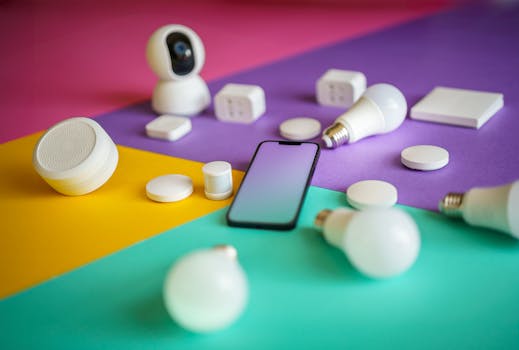Smart Connectivity: The Role of IoT in Modern Communication

Smart Connectivity: The Role of IoT in Modern Communication
Smart Connectivity, The Internet of Things (IoT) has revolutionized the way we communicate, making it smarter, faster, and more efficient. The IoT refers to the network of physical devices, vehicles, home appliances, and other items that are embedded with sensors, software, and connectivity, allowing them to collect and exchange data. This technology has transformed the way we interact with each other and with the world around us.
The IoT has enabled the development of smart devices that can communicate with each other and with humans, creating a seamless and integrated experience. For instance, smart home devices can be controlled remotely using a smartphone app, while smart cars can communicate with other vehicles and infrastructure to improve road safety. The IoT has also enabled the creation of smart cities, where data from various sources is used to manage traffic, energy, and waste management, making urban living more efficient and sustainable.
The Impact of IoT on Modern Communication
The IoT has had a significant impact on modern communication, transforming the way we interact with each other and with the world around us. With the IoT, communication is no longer limited to traditional means such as voice calls and text messages. Instead, we can use a variety of devices and platforms to communicate, including social media, messaging apps, and video conferencing tools. The IoT has also enabled the development of new forms of communication, such as augmented reality and virtual reality, which are changing the way we experience and interact with information.
The IoT has also improved the efficiency and effectiveness of communication, enabling real-time data exchange and analysis. For instance, in the healthcare sector, IoT-enabled devices can monitor patient vital signs and send alerts to healthcare professionals in real-time, enabling timely interventions and improving patient outcomes. Similarly, in the transportation sector, IoT-enabled vehicles can communicate with each other and with infrastructure, reducing congestion and improving road safety.
The Benefits of IoT in Modern Communication
The IoT has numerous benefits in modern communication, including improved efficiency, productivity, and convenience. With the IoT, we can access information and communicate with others anytime, anywhere, using a variety of devices and platforms. The IoT has also enabled the creation of new business models and revenue streams, such as subscription-based services and data analytics. Furthermore, the IoT has improved the quality of life, enabling the creation of smart homes, cities, and communities that are more efficient, sustainable, and livable.
However, the IoT also poses significant challenges, including security, privacy, and interoperability. As more devices become connected to the internet, the risk of cyber attacks and data breaches increases. Additionally, the IoT raises concerns about privacy, as personal data is collected and analyzed by devices and companies. Moreover, the IoT requires interoperability between devices and platforms, which can be a challenge due to the lack of standardization and compatibility.
Conclusion
In conclusion, the IoT has revolutionized modern communication, making it smarter, faster, and more efficient. The IoT has enabled the development of smart devices, smart homes, and smart cities, transforming the way we interact with each other and with the world around us. While the IoT poses significant challenges, including security, privacy, and interoperability, its benefits, including improved efficiency, productivity, and convenience, make it an essential technology for modern communication. As the IoT continues to evolve and improve, we can expect to see even more innovative applications and benefits in the future.